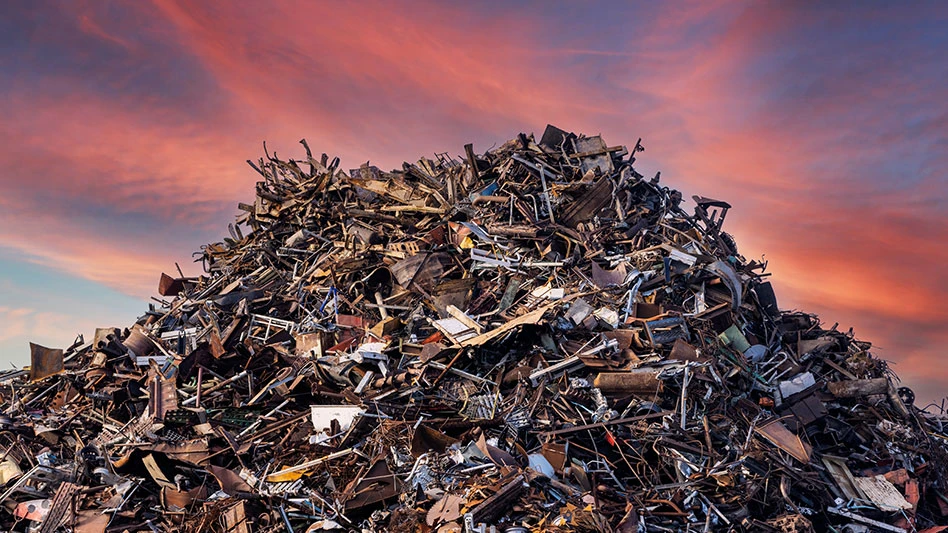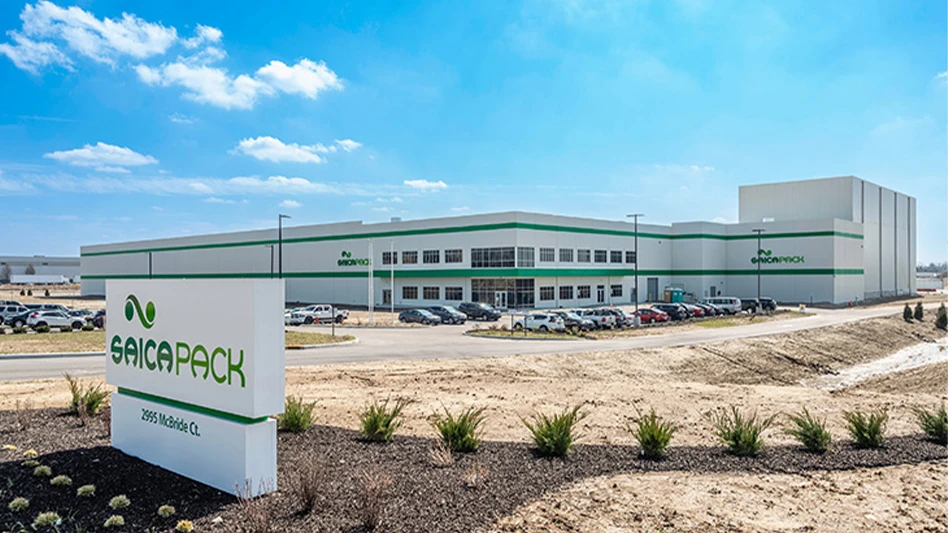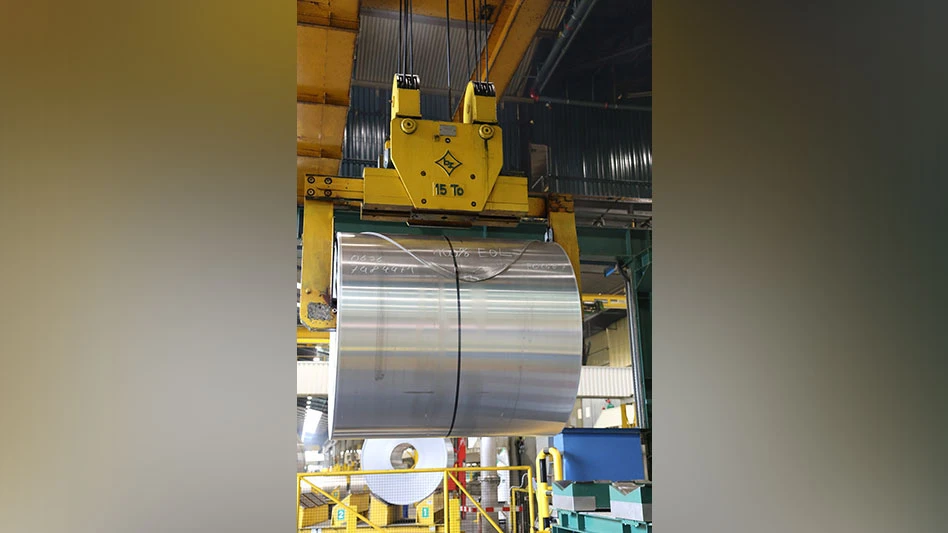Known for its commodities trading services, Enron Corp. now also owns mills that consume scrap paper.
Enron Corp. might be considered a neophyte when it comes to making paper. But the company, which has purchased mills, intends to make up for its lack of experience by using many of its financial tools to become a force to be reckoned with.
Enron, the Houston-based energy and commodity trading firm, is starting to become a more noteworthy player in the paper and paper recycling industry. Through its acquisition of newsprint mills in Canada and the U.S., as well as through its Enron Online and Clickpaper.com operations, the company is becoming more active in the paper recycling business.
|
Metal Business on the Horizon |
|
At the same time Enron Corp., Houston, is becoming more active in the forest products industry it is also becoming more involved in the scrap metals business. Enron Metall Recycling GmbH is a growing scrap metals merchant in central Europe, operating four yards situated in Germany. These are located in Essen (main office), Hamburg, Nuremberg and Frankfurt. In addition to its yard operations in Germany, the company also trades nonferrous scrap metals on the international market and has traders working in the U.S., some based out of an office in Chicago. |
PUTTING IT DOWN ON PAPER
The growth of Enron’s role in the forest products industry catches many people by surprise. However, according to company managers, the model honed by the company is perfectly suitable for commodities from the forest products industry.
Steve Klein, director of Enron Forest Products, stresses this point. “Basically, we see the recovered paper business as a commodity business. We see high volatility. Therefore, we see a big need in the industry for a risk management product.”
He adds, “Our overall goal is to be the leading provider of physical and financial risk management services to the industry. We see the need and are actively developing our market position in this sector.”
So, what exactly is Enron’s goal? And why is there a perceived advantage to using this method?
Malcolm Randolph, vice president of Enron Forest Products, ticks off four advantages to using Enron’s financial tools. “The first is liquidity. There is always an opportunity to buy or sell product.” Randolph also cites credibility and transparency. “Enron has a strong balance sheet. When you enter a transaction with Enron there are guarantees that we will supply or be supplied by you. Finally, there are efficiencies. Buy online immediately.” These four qualities are huge advantages, he contends.
An added feature is the ability to establish a position for a term that is as long or short as a company would like. “We give them price certainty. We are willing to enter a transaction and give them three, five or 10 years where we will take the volume or hedge out their products at a fixed certain price. So in the near term they can budget accordingly. They can evaluate their capital spending budget because they can lock [in] what their revenue stream will look like. Over a longer period of time they can make different capital expenditure decisions relative to where they think their revenue stream is.”
This concept was developed for several commodity streams, including oil, agricultural products and other base materials, and has been expanded to include not only recovered fiber, but also broadband capacity and even hedging against weather conditions.
For Enron, the first step to entering these markets often is to develop a physical presence. This is what dictated Enron purchasing its paper mills. To begin the process, Enron purchased the Garden State Paper mill in Elmwood Park, N.J., and a newsprint mill from Daishowa in Quebec City, Canada.
The mills give Enron the physical assets to allow itself to help create the market for newsprint. Both mills are also significant consumers of recovered fiber: the Garden State mill is a 100 percent recycled newsprint mill; the Quebec mill, now called Strathacona, produces 50 percent recycled content finished product.
Before purchasing the two newsprint mills, Enron had a more difficult time obtaining the material to make its trading business effective. “We weren’t easily able to get access to the physical newsprint when we tried to do contracts for it with producers,” says Klein. “The biggest and most important thing about newsprint that was different from recovered is that it is more difficult to commoditize it. There are lots of different weights, lots of different grades. The first component to start making a market is setting a commodity standard that the entire industry will follow. What we were able to do by buying the two mills is gain access to physical supply that we can then use to standardize the product. Once you build that building block, from there if there are better grades or worse grades you can work off the main screen,” he remarks.
“But you need that main screen to create the standardization, and then you create that price transparency that is the fundamental building block for the price risk management tools for producers or users,” states Klein.
Another advantage to Enron owning its own mills, according to Klein, is the way it has allowed the company to develop its overall market. “It has anchored our paper recycling hub in the Northeast. It also really kick-started our business in the Northeast. [It opened up] lots of volume that we are able to access [and] buy as a result.”
The size of the trading is reflective of this growth opportunity. According to Enron, the company is trading approximately 600,000 tons of newsprint a year out of its newsprint mills, plus around 100,000 tons of directory paper and around 60,000 tons of board.
In addition to the finished product, Enron also has purchased around 500,000 tons of recovered fiber.
|
Trouble Also Looming? |
|
Recyclers are waiting to see whether an investigation by the Securities and Exchange Commission (SEC) into the activities of a former top officer of Enron will have any effect on the company’s recycling-related operations. The SEC probe is reportedly examining transactions between Enron Corp. and partnerships headed up by Enron’s former chief financial officer Andrew S. Fastow. The partnerships may have helped Enron hide financial losses from stockholders and other investors. |
Making markets work
The financial products, as Enron calls them, may seem complicated for many dealers used to developing a contract with an individual mill. However, Klein explains, the concept is fairly simple.
The object is to allow participants to buy or sell something at a fixed price. There are all kinds of options, but the fundamental building block is giving someone a fixed price for a certain period of time.
“What we do is swap that index price on a monthly base against the fixed price that we have agreed to with that customer,” explains Randolph. “We will agree with the customer on a fixed price during the period of time. What will happen is, the customer will go out to the marketplace and sell his product. He will receive the price he receives for it. We would then [pay] the producer the difference between the price they [received] and what was contracted. If the payment is more than what is paid, then they pay us. Financially, no matter what happens he gets the fixed price. “
As another example, if a mill agrees to a price of $50, they may go out into the market and purchase the material. If the price of the particular commodity is $45, they purchase it for that amount and then pay the additional $5 to Enron. If the price of the commodity is $55, the company would pay the market price and then Enron would reimburse the company $5 a ton.
The advantage of using this method, according to Enron, is that it gives users the opportunity to budget their operations over a longer period of time. If a company is guaranteed a certain price for a predetermined length of time, it is more willing to actively go out in the market to seek out tonnage required.
“The product is getting to the customers whether buying through us or buying through the customers. He knows exactly what his price is,” says Klein. By removing the concerns about volatile prices, the reasoning goes, a company can more comfortably develop its markets confident that prices will not make any particular commodity too difficult to collect and process.
This concept is not just talk from Enron. Several of the companies that have tested the method agree to many of the advantages of selling a portion of their business through Enron.
Derivatives, hedges and swaps are terms not commonly heard by many in the paper stock industry. They are becoming more common, however. A growing number of paper stock dealers, generators and mills are testing the water by using one of these financial models. Many speak highly of the opportunities available by establishing a price guarantee, although many of the companies are only opening up a small portion of their business to this method.
The opportunities Enron is developing are not geared for just one segment of the industry. Rather, the company is pursuing business with mills and collectors, as well as generators. “It is the whole industry,” Randolph says. “The services we offer have an application all through the value chain. In all aspects of that chain there are people who face that price risk. We are bringing contractual integrity.”
ON THE JOB
Casella Waste Management, a solid waste and recycling company headquartered in Rutland, Vt., has been using Enron’s financial tools for some of its material for less than one year.
According to Joe Fusco, a spokesman for Casella, since starting to use Enron’s trading products the company has steadily increased the amount of material that it trades through the company. Presently, the level is around 25 percent of the recovered fiber the company collects and processes.
The biggest advantage, according to Fusco, is predictability. “That protects us from the downside. We like that feature. The attractiveness to us is that we can remove the volatility. We are in the solid waste business,” he remarks, hinting that the company has little tolerance for dealing with unpredictable budgeting caused by volatile secondary fiber prices.
Mike Benedetto, a vice president with Tidewater Fiber Corp., Chesapeake, Va., also sees many opportunities by using Enron for a portion of its business. “Enron has the potential to revolutionize the industry by reducing the risk. Enron has the ability, through its economies of scale, to get better prices. They can guarantee [set] prices.”
While the company at the present time is only running a small portion of its overall business through Enron, it is a percentage that is expected to grow over the months. “We see it as an opportunity,” says Benedetto.
Although Enron has two newsprint mills at the present time, the company may not be content to let that be the end of its physical acquisitions in the forest products industry.
Recently, there have been reports that Enron was close to acquiring a pulp mill in Mississippi, although that arrangement collapsed earlier this month. And, the company made a pass at another pulping facility last year, although that deal also failed to come together. The company still remains on the lookout, says Klein.
While there continues to be an interest in acquiring additional assets, conversely the company isn’t necessarily wedded to holding assets forever.
“What is core for Enron is trading and the commodity markets. That is our core competency. Those are our core skill sets,” declares Randolph.
It is not out of the question that when the company is able to bring trading activity up to a certain level, the mill may be sold off. “When you get to the part where the market is liquid, there may come a time when it may be time to find a more appropriate owner for the property,” he states.
But for now, Enron is a consumer of scrap paper offering an opportunity for some recyclers to change the way they conduct their business.
The author is Internet Editor of RecyclingToday.com and senior editor of Recycling Today. He can be reached at dsandoval@RecyclingToday.com.

Explore the November 2001 Issue
Check out more from this issue and find your next story to read.
Latest from Recycling Today
- Steel Dynamics cites favorable conditions in Q1
- Hydro starts up construction in Spain
- Green Cubes unveils forklift battery line
- Rebar association points to trade turmoil
- LumiCup offers single-use plastic alternative
- European project yields recycled-content ABS
- ICM to host colocated events in Shanghai
- Astera runs into NIMBY concerns in Colorado






